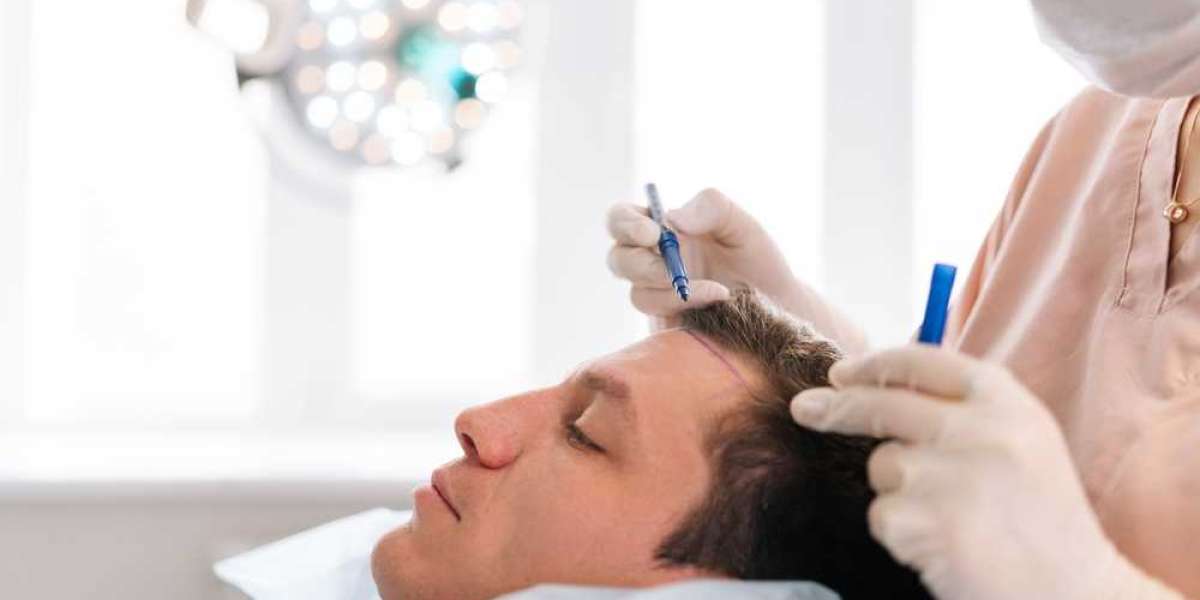Hair transplantation has become an increasingly popular solution for individuals experiencing hair loss or thinning hair. In Abu Dhabi, where advanced medical technology meets expert care, several techniques are utilized to help patients achieve fuller, natural-looking hair. This article explores the most common Hair transplantation in Abu Dhabi ( زراعة الشعر في ابوظبي ), outlining their processes, benefits, and considerations.
Understanding Hair Transplantation
Before delving into specific techniques, it’s essential to understand the basics of hair transplantation. This surgical procedure involves relocating hair follicles from a donor site (usually the back or sides of the head) to areas of thinning or balding. The goal is to create a natural appearance while ensuring the transplanted hair integrates seamlessly with the existing hair.
1. Follicular Unit Extraction (FUE)
What is FUE?
Follicular Unit Extraction (FUE) is one of the most popular hair transplantation techniques. This minimally invasive procedure involves extracting individual hair follicles from the donor area using a specialized punch tool.
Benefits of FUE
- Minimized Scarring: Since FUE does not require a linear incision, patients experience minimal scarring.
- Quick Recovery: The recovery time is shorter compared to other methods, allowing patients to return to their regular activities sooner.
- Natural Results: FUE allows for precise placement of hair follicles, resulting in a natural-looking hairline.
Considerations
While FUE is generally safe, it requires a skilled surgeon to ensure optimal results. Additionally, patients may require multiple sessions for significant hair restoration.
2. Follicular Unit Transplantation (FUT)
What is FUT?
Follicular Unit Transplantation (FUT) is a traditional method that involves removing a strip of scalp from the donor area. The strip is then dissected into individual follicular units before being transplanted into the recipient site.
Benefits of FUT
- Higher Yield: FUT can provide a larger number of grafts in a single session, making it ideal for patients with extensive hair loss.
- Cost-Effective: FUT is often less expensive than FUE due to the efficiency of the procedure.
- Suitable for Larger Areas: This technique is beneficial for covering larger areas of baldness.
Considerations
FUT typically leaves a linear scar at the donor site, which may be a concern for patients who prefer to wear their hair short. Additionally, the recovery period may be longer compared to FUE.
3. Robotic Hair Transplantation
What is Robotic Hair Transplantation?
This cutting-edge technique employs robotic technology to assist in the extraction and placement of hair follicles. The ARTAS system is one of the most advanced robotic systems used in hair transplantation.
Benefits of Robotic Hair Transplantation
- Precision and Accuracy: The robotic system can accurately identify and extract follicles, reducing the risk of damage.
- Consistent Results: The technology ensures consistent and reproducible results, enhancing overall patient satisfaction.
- Minimized Human Error: The robotic system minimizes the risk of human error during the extraction and placement processes.
Considerations
Robotic hair transplantation may be more expensive than traditional methods. Additionally, while the technology improves precision, it still requires a skilled medical team for optimal results.
4. Platelet-Rich Plasma (PRP) Therapy
What is PRP Therapy?
Platelet-Rich Plasma (PRP) therapy is often used in conjunction with hair transplantation techniques. This procedure involves drawing the patient’s blood, processing it to concentrate the platelets, and injecting it into the scalp to promote hair growth.
Benefits of PRP Therapy
- Enhanced Healing: PRP therapy can accelerate the healing process after hair transplantation.
- Stimulated Hair Growth: The growth factors in PRP can help stimulate hair follicles and improve hair density.
- Non-Invasive: PRP therapy is a non-surgical option that can be performed in conjunction with hair transplantation procedures.
Considerations
While PRP therapy can enhance results, it is not a standalone solution for hair loss. Patients may require multiple sessions for optimal outcomes.
5. Scalp Micropigmentation (SMP)
What is Scalp Micropigmentation?
Scalp Micropigmentation (SMP) is a non-surgical technique that involves tattooing tiny dots on the scalp to mimic the appearance of hair follicles. It’s often used as an adjunct to hair transplantation or for individuals who prefer a shaved look.
Benefits of SMP
- Immediate Results: SMP provides instant visual results, enhancing the appearance of hair density.
- Low Maintenance: The procedure requires minimal maintenance compared to traditional hair restoration techniques.
- Non-Invasive: SMP is a non-surgical option for those who may not be suitable candidates for hair transplantation.
Considerations
While SMP can enhance the appearance of hair, it does not promote actual hair growth. It is essential for patients to have realistic expectations regarding the outcomes.
Conclusion
In Abu Dhabi, various hair transplantation techniques cater to individual needs and preferences. From minimally invasive options like FUE to traditional methods like FUT, and advanced technologies like robotic hair transplantation, patients have access to cutting-edge solutions for hair restoration. Additionally, complementary treatments such as PRP therapy and SMP provide further options for enhancing hair appearance.














